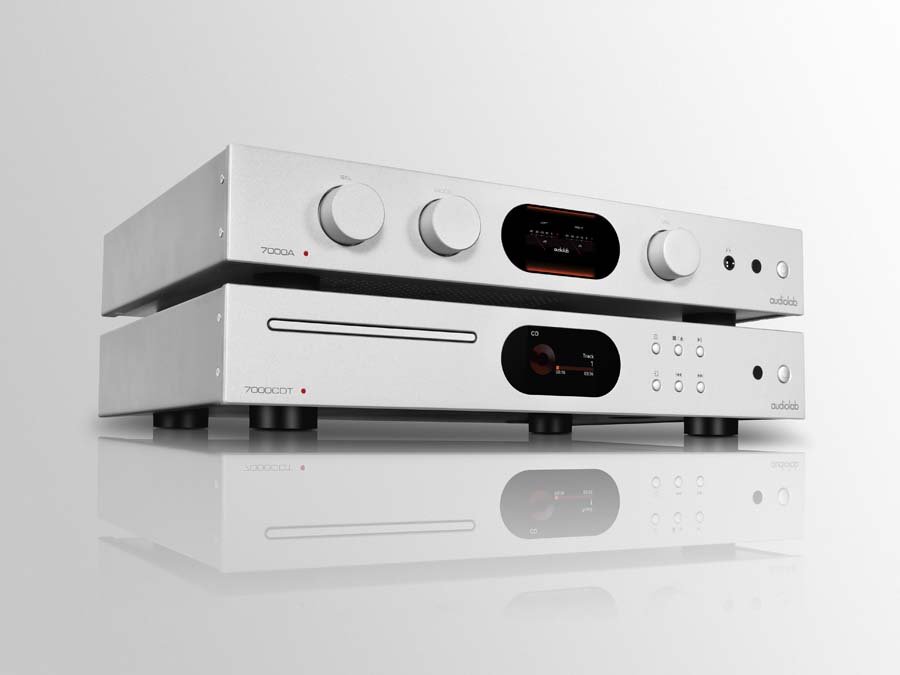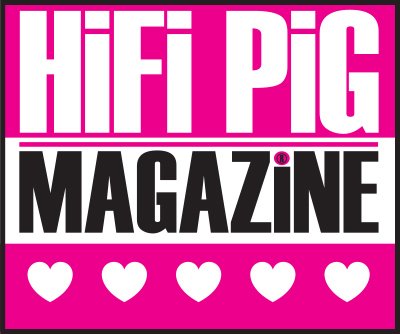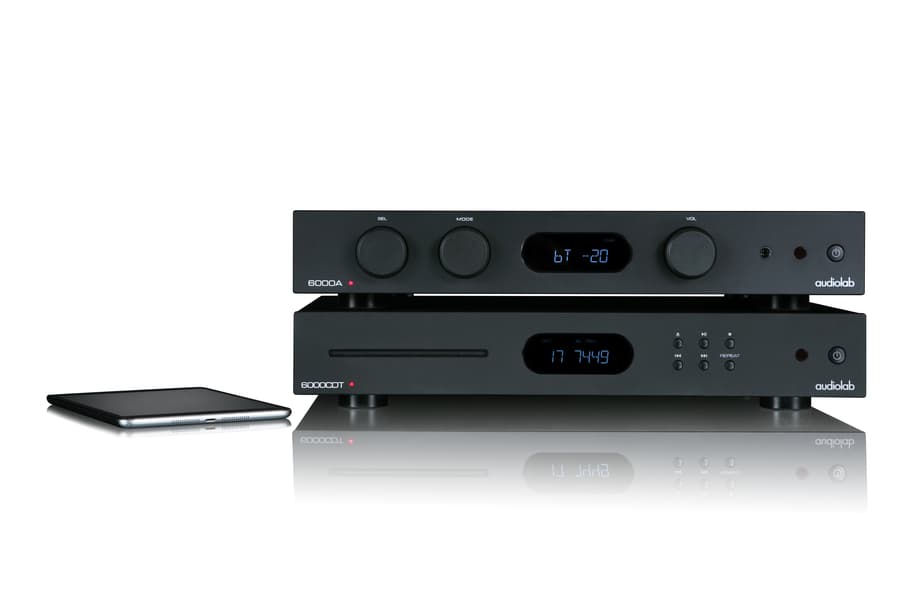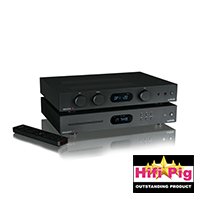AUDIOLAB 7000A INTEGRATED AMPLIFIER AND 7000CDT CD TRANSPORT REVIEW
Audiolab and their 7000 series integrated amplifier and CD transport on paper look to represent excellent value for money at around £1600 for the pair, but how do they perform? Michael Fairbairn takes a listen for HiFi PiG
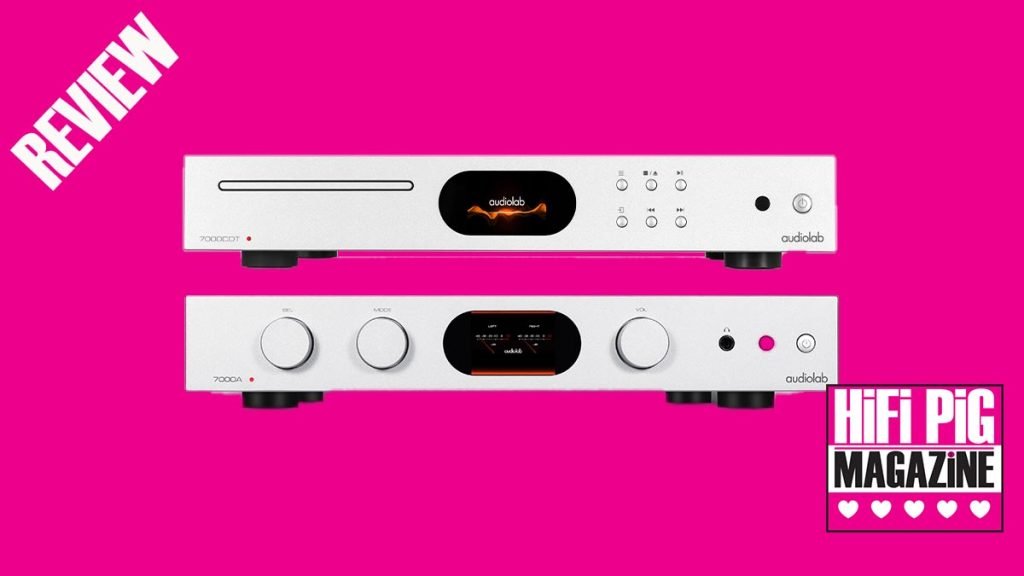
Audiolab’s latest range of HiFi components is the 7000 series, which inludes the 7000A, 7000CDT and 7000N Play network audio streamer. Audiolab came into prominence some 40 odd years ago, much like myself. Back then the much-lauded 8000A integrated stereo amplifier was hot on the market and is still considered a good piece of equipment to this day.
When I ventured into the realm of reviewing HiFi equipment a few years ago, my friend and fellow HiFi Pig contributor, John Scott, loaned me his beloved 8000A to pair with my own ageing components. I became quite fond of it and was very keen to check out the latest offering from Audiolab in what they pitch as the ‘mid-tier’ full-size component range.
BUILD QUALITY AND FEATURES OF THE AUDIOLAB 7000A INTEGRATED STEREO AMPLIFIER AND 7000CDT CD TRANSPORT
The amplifier and CD transport were both packaged neatly and securely, with consideration for the products using minimal yet sturdy materials. Nice to see some thought put into that, as first impressions often count for so much.
The amp felt reassuringly weighty as I removed it from the box (8.4kg compared to the 7.8 of its younger 6000A sibling, to be precise). I immediately had the sense that I was holding something quite special. Both components are well-designed with a sleek metal chassis that has a classic and somewhat familiar look employing an unfussy finish with minimal controls. The aesthetics ticked all of the right boxes for me while coming across as more high-end than the relatively modest price tags might imply.
On the front of the amplifier you have the power button to take the amp out of standby, followed by the remote control sensor and then a 1/2 inch headphone input. The latter is not something I have ever made use of on any amp and it was no exception here but I’m sure it will be a great bonus for those who are headphone users, and Audiolab’s press release proudly suggests, …” a dynamic and detailed performance with all manner of headphones is assured.” Given the level of acclaim the company have garnered for their 6000A, from which improvements have been made to the Class AB circuitry by Jan Ertner, Audiolab’s lead electronics designer, I will have to take their word for it but have every reason to assume that it does just that.
The fascia of the 7000A boasts three rotary dials for volume, mode and a variety of analogue/digital input selections. Each of these has a clean and smooth feel and matches the sharp finish of the overall look. The volume knob also allows you to mute the amp with a single press. Three operational mode options can be selected to provide either Integrated, Pre or Pre-Power. Integrated mode utilises the pre and power amp stages, allowing for the connection of digital and analogue sources as well as speakers to the gold-plated binding posts on the back of the amp. Should you prefer to have a power amp-only function, ‘Pre-Power’ does just that by disconnecting the pre and power amp stages. Conversely, ‘Pre Mode’ switches the 7000A into a standalone DAC/preamp. This is an attractive and versatile set of options for someone like me, who is considering potential options to upgrade my reference system but is yet to decide on the best combination of products. I tend towards the preference of keeping components separate, making this really nice to have should you be of a similar mind.
Another smart dual-use feature of the Mode knob is the ability to access further menu settings, including digital filter selection, upsampling, input sensitivity adjustment, balance control, automatic standby switching, and volume curtailment. Lots of options to play with for those who like to tailor the sound to their own room and preference.

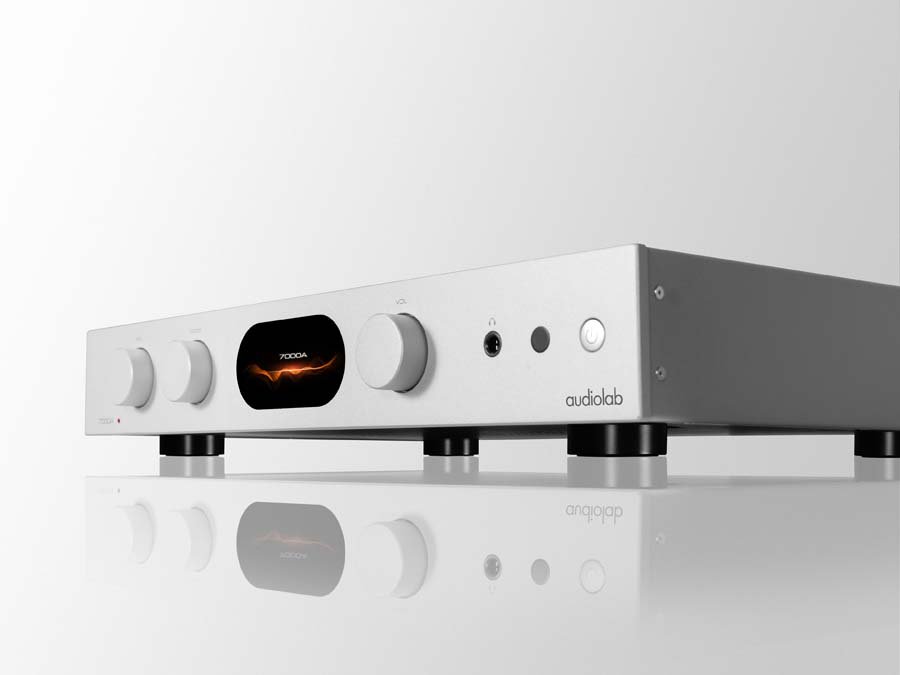
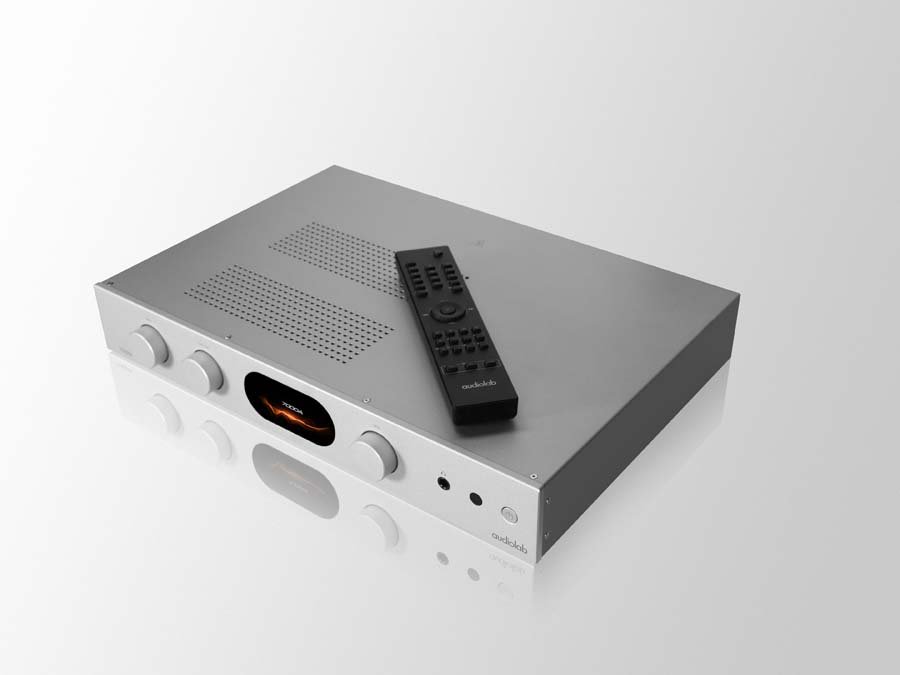
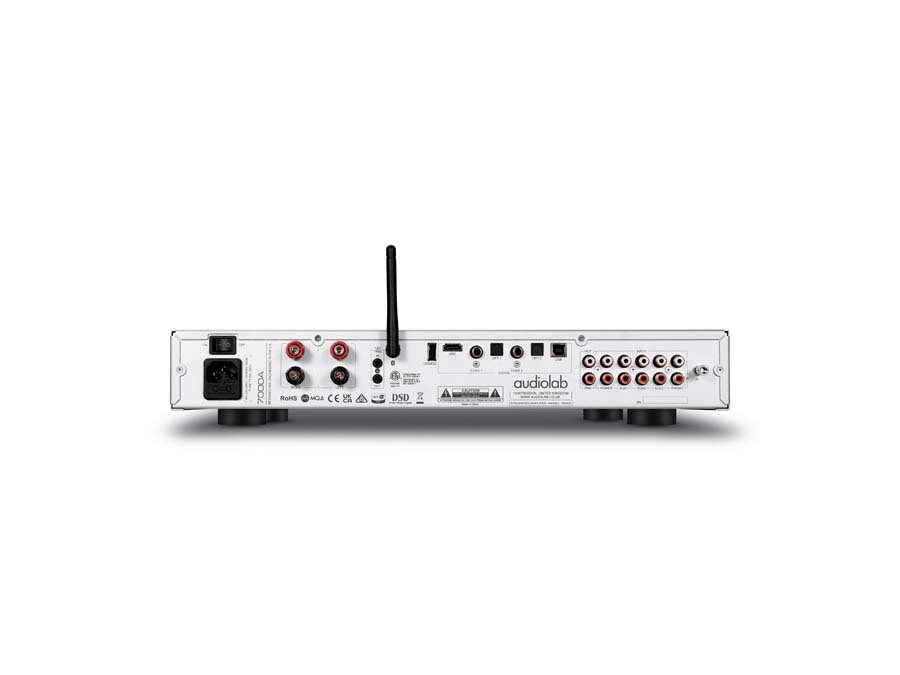
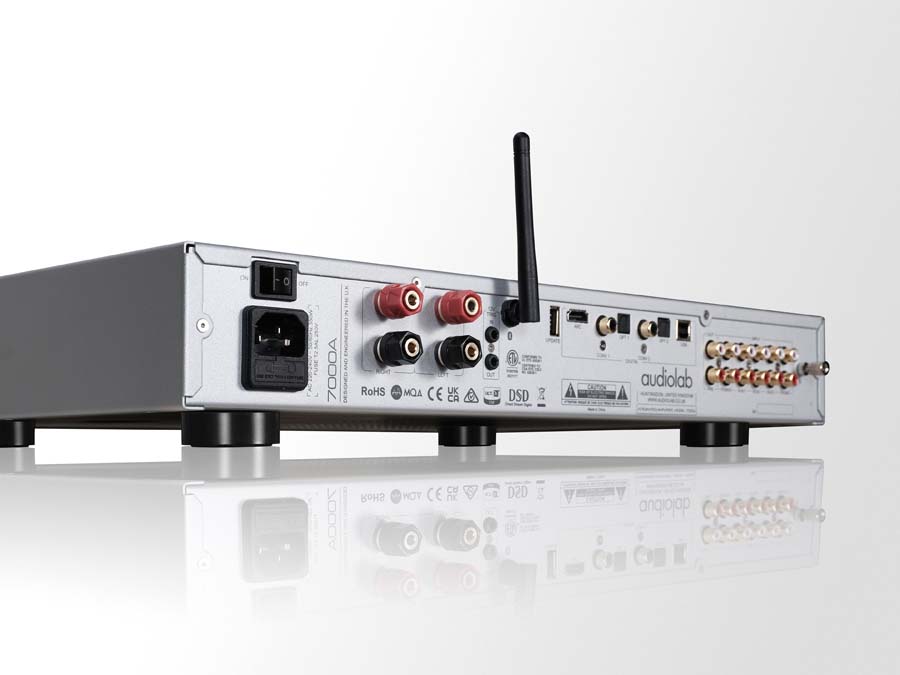
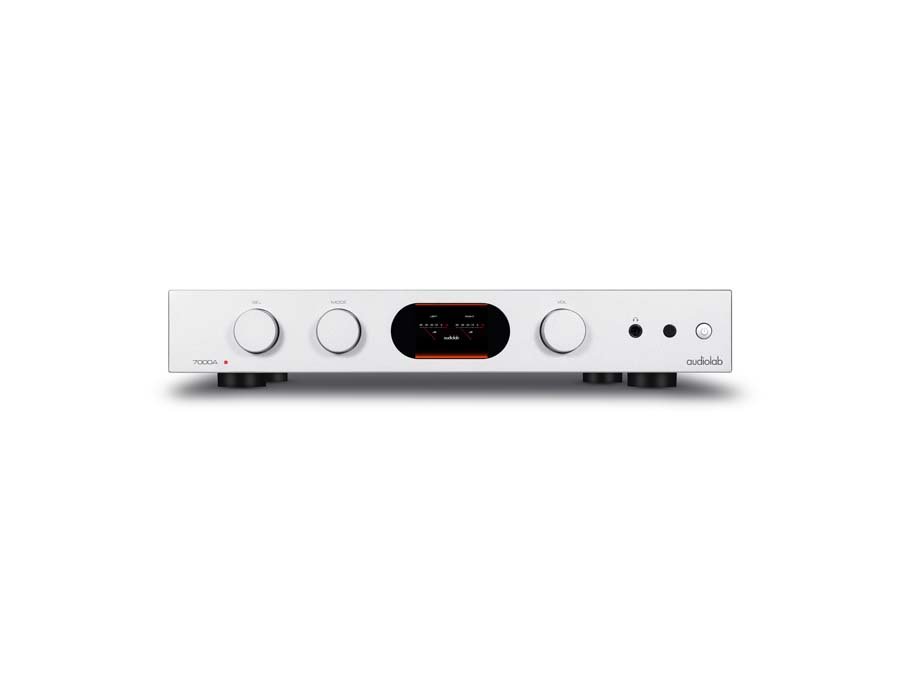
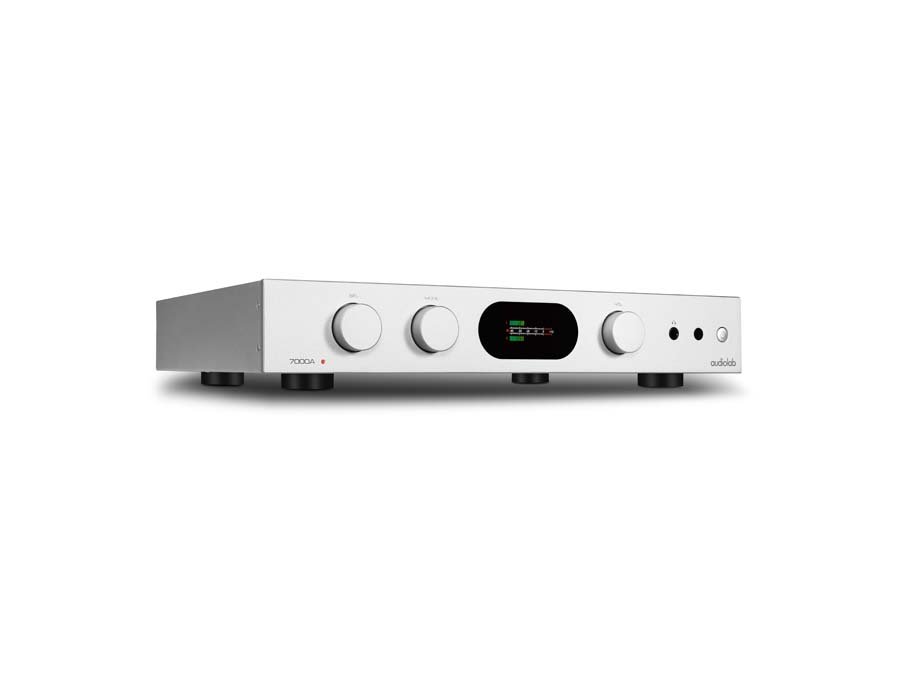
One of the most appealing features of both the amplifier and CD transport is the 2.8 inch LCD screen, with the GUI in colour (compared to the monochrome display of the 6000A, for reference). It’s an attractive addition, nicely centred and can be switched between your preferred view on the 7000A. Initially, I thought it might be a bit of a novelty to have a VU meter that reacts to the levels of the source, but I found it to be quite enjoyable and satisfying to see. I tended to use the settings and format data screen on the amplifier or opt for it to be switched off entirely, but, on both devices, you also have the choice to adjust brightness or for it to come on when you select a function and then switch off again. I appreciated the flexibility, as opposed to being forced to accept a single experience. The transport display is slightly more limited and simply shows information about tracks from CDs and USB-connected storage devices.

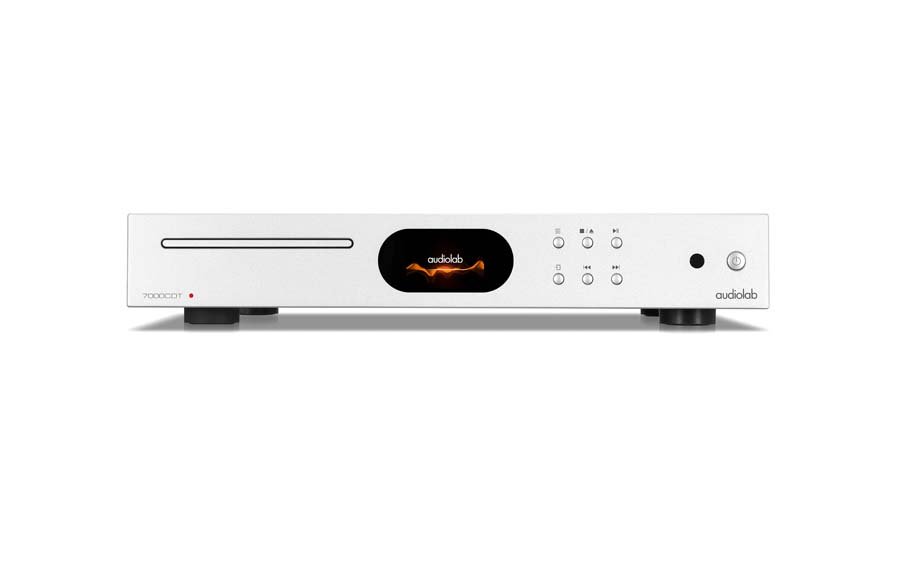
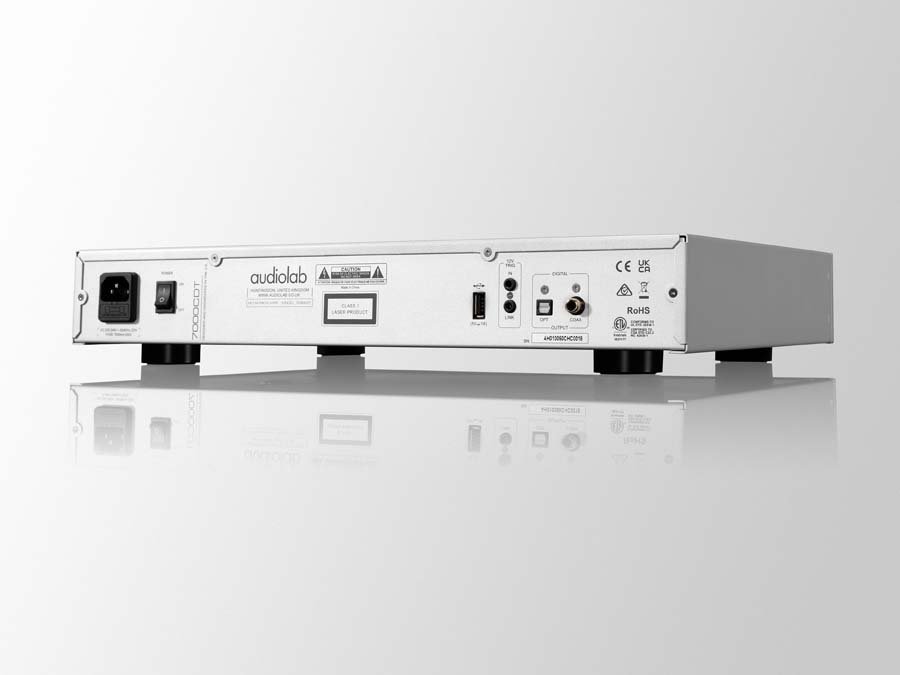
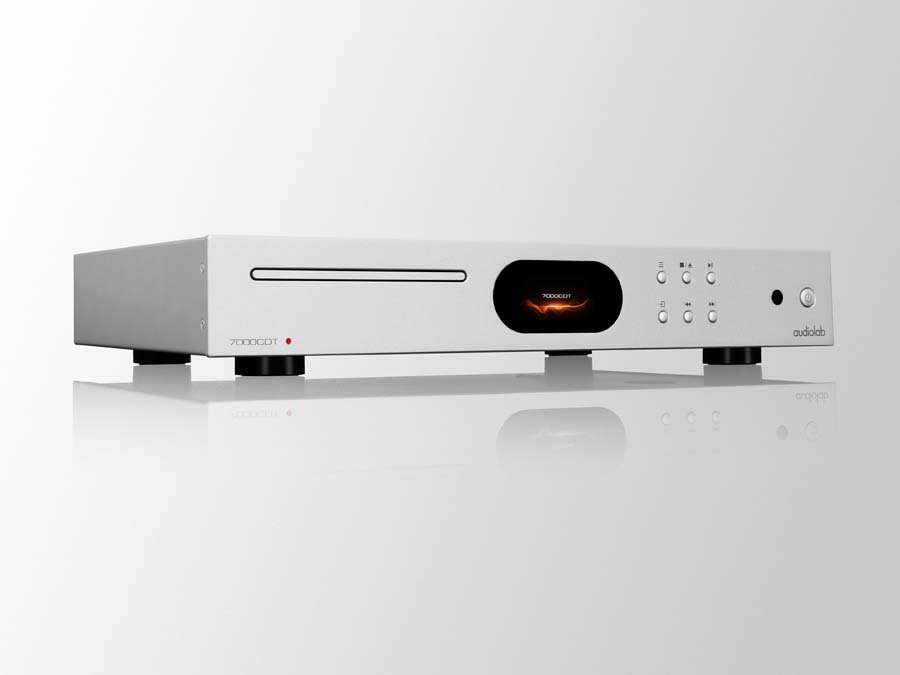
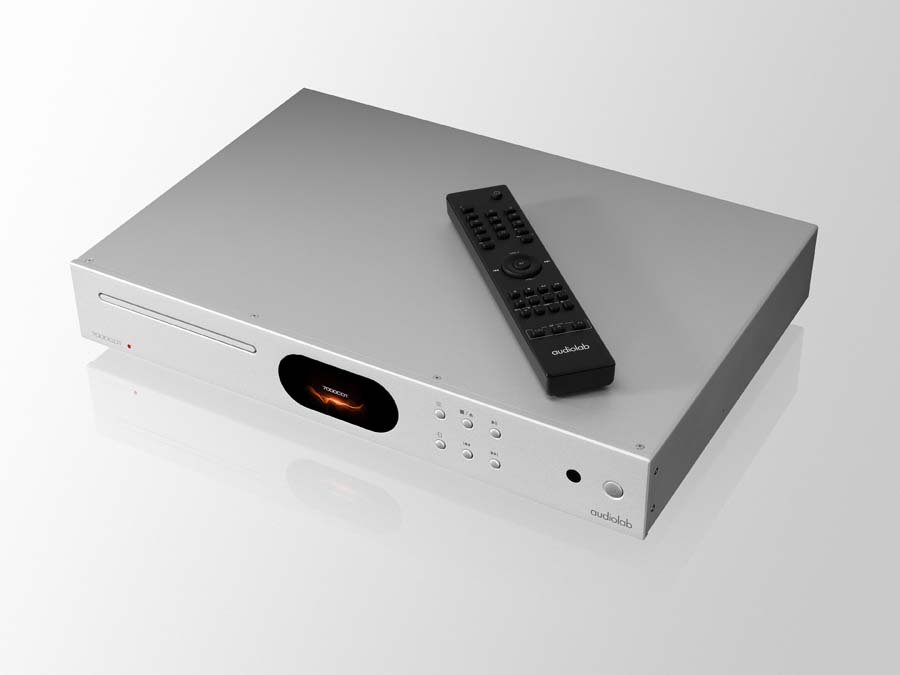
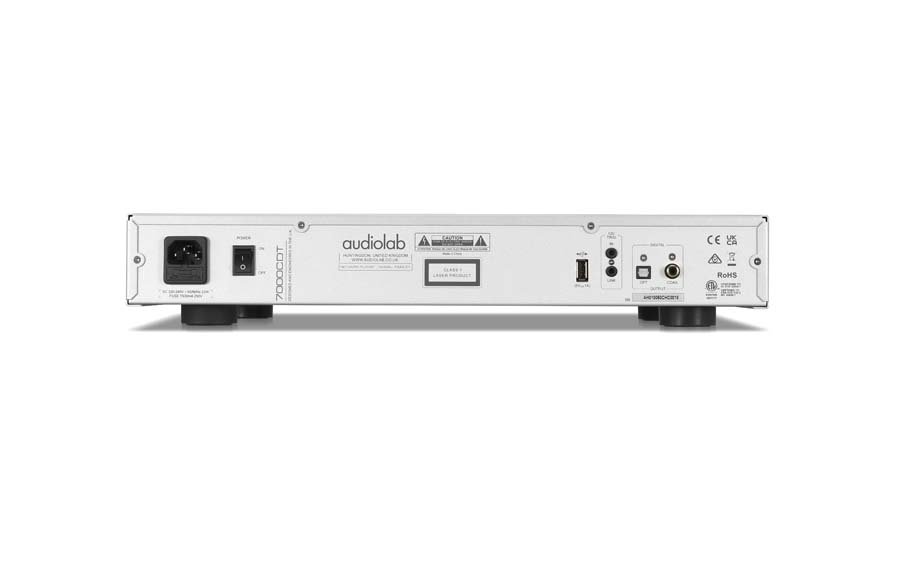
The back of the 7000A boasts quite an array of inputs, compared to the fairly limited set of analogue connections on my Pathos Classic One MKIII integrated amplifier. This was a real treat for me. There is a 12v trigger connection that allows for the integration and control of additional Audiolab components. Further digital inputs are a single USB Type A for firmware updates, 2 coaxial, 2 optical, a USB type B digital for devices such as PCs/Laptops, phones and tablets, or external storage units. In my case, I used it for my new Raspberry PI streamer running Ropieee and it was a seamless process to locate and connect to it.
Last but by no means least is the HDMI ARC, which affords it the benefit of being considered worthy of a place in the centre of the home to be easily integrated with your audio-visual setup. More on that later.
Analogue sources are also well catered for with three line-level RCA inputs and a phono stage to support moving magnet cartridges. The company states, “Audiolab has tweaked the 7000A’s MM phono stage to improve performance compared to the 6000A, with precise RIAA equalisation and input filtering to ensure vinyl is treated with as much care as digital sources.”
Having relied on a variety of temporary solutions for a DAC in my reference system (Allo Boss DAC hat, Cambridge Audio DAC Magic, to name just two), it was a relief to have what is considered to be state-of-the-art circuitry at my disposal. Audiolab has utilised a new-generation 32-bit Sabre chip (ES9038Q2M), which supports PCM to 32-bit/768kHz and DSD to 22.5792MHz (DSD512) via USB. In addition, full MQA decoding is supported and the 7000A is certified ‘Roon Tested’.
Bluetooth 5 reception, with aptX HD support, rounds out the digital connectivity available and it could not have been simpler to use. Streaming directly from my phone, I was able to show off to the less audiophile-minded members of our household (my wife and two young kids) how easily I could let them hear their favourite songs. Even the songs of Encanto sounded great on this system.
The output power per channel of the 7000A is a more than adequate 70W into 8 ohms, matching the spec of my Pathos. On paper, the amp has sufficient muscle to take on more demanding loads though, with a maximum current delivery of 9 Amps. In my case, a pair of pint-sized Leema Xen 2 nearfield studio monitors. They really are diminutive (measuring just 21cm x 14cm x 20cm (HWD) and with a volume of five cubic litres, 85dB efficiency and an impedance of 6 Ohms. I have come close to listing them for sale several times, as they are pretty tough to drive to really get the best out of them and really not best suited to my current reference amplifier.
As much I love my Pathos Classic One MKIII stereo integrated amp, the two components really do make uneasy bedfellows. The Pathos is a beautiful piece of engineering and has a special hug of sound for music that is more on the gentle side. The pre-stage is Class A with all tubes with an exquisite sense of airiness and a proper human feel about it. The power stage is solid state, Class A/AB. It can cope with more demanding music, such as heavy rock, but I would not say that is its comfort zone. When presented with complex rock arrangements it often lacks the oomph, bass control and clarity to fully make the track shine or pack any real kind of punch. Despite their respective and collective limitations I do still enjoy them and have not yet decided on replacements.
SOUND QUALITY
Up first I played Schism by Tool on CD. It is a dense and rhythmic prog/alternative rock track that ebbs and flows from sparse arrangements to sections that pack a lot of punch and weight. On my reference system, it tends to be quite closed in, losing that feeling of rise and fall and definitely lacks drive and attack. With the Audiolab pairing, it was nothing of the sort and I found it to be more than capable of handling the heft while giving the track a tighter, more controlled delivery overall.
One of the elusive elements I have listened out for when trying out HiFi gear with driven rock music is its ability to draw out the satisfying rattle of a bass guitar played with attack paired with a kick drum that you can actually feel as well as hear clearly. With that in mind, I popped Scream Dracula Scream by Rocket From The Crypt in the CD tray. Young Livers is a vibrant and uplifting punk n’ roll number, featuring a propulsive beat embellished with horns. The Audiolab gear was clearly capable of drawing the best out of all of these elements and more. The depth was there with the horns arrangement and not lost in a mess of guitars and layered vocals, all of which were well separated and presented in a cohesive manner.
Call Me Little Sunshine by Ghost is a much more recent song than the first two I played and has a slick, modern hard rock production. This time I was streaming and was pleased to get the grunt of the guitars and drums coming to the fore during the intro, while the brooding and haunting feel of the more stripped-back verses were deftly delivered with a drive and a sense of urgency. the looping guitar and bass should feel stirring with a real sense of space and that’s just what came across. Furthermore, Tobias Forge’s eery vocal was given plenty of room to breathe.
John Moreland’s album High On Tulsa Heat is an honest and heartfelt collection of alt-country gems full of hope-laden sadness, delivered with heartbreaking and gravelly vocals. It’s beautifully human in a warm and earthy way with simple acoustic guitar arrangements. This is best exemplified on You Don’t Care For Me Enough To Cry, which I have enjoyed immensely many times via my Pathos/Leema combo, as this is the kind of music with which they truly excel. While streaming with the 7000A I got that engaging texture and sense of intimacy but perhaps just a tad more on the clinical or analytical side than with the Pathos. That’s not to say I didn’t enjoy it, it was still engaging and with a very open presentation on the stripped-back accompaniment, but I did miss that added touch of warmth in the top end and the resolve from the tubes that I’m more used to. The best way I could really describe the difference is the feeling with the Pathos of John Moreland actually sitting in the room in front of me performing for an audience of one. With the Audiolab he was almost there but it felt more like a very good copy. I could absolutely live with that though, because the weariness in his voice was still very relatable and touching.
Taking that as my cue to stick with tracks in a similar, rootsy singer-songwriter vein, Brian Fallon’s (The Gaslight Anthem) Hard Feelings stepped things up a notch with a piano-led band arrangement. I played his solo album on almost constant repeat directly on my phone every night when my son was born and I was rocking him to sleep. The gentle, laidback feel throughout and the lush, harmony-laden arrangements were perfect to relax both of us and it worked to get him settled down for the night. I grew very fond of the entire album, Local Honey, and this track is a real standout. Calling up the track on the CDT, it opens with an organ drone, sparse piano chords and Fallon’s heartbroken, introspective vocal, everything felt perfectly balanced with a luscious tone and an excellent breadth and depth to the soundstage. As the song builds, the restraint of the drums is crucial to the pulse, never allowing the music to feel rushed or pushed. I was delighted to hear the detail and feel of every tom beat and brush stroke of the expressive performance.
Next, I decided to try out a comparison between streaming audio only & TV from Disney+. I’m not ashamed to admit that I have become very fond of the following songs, written by Lin-Manuel Miranda, who has created award-winning Broadway musicals, as well as soundtracks for animated Disney films such as Encanto and Moana, among countless other film and television productions. I have been subjected to the songs ad infinitum while watching the films and just about every time I take my son and daughter anywhere in the car.
Disney musical production is typically excellent and even translates well via an average TV sounbdbar or car stereo, so I was really curious to hear what else might be uncovered when listening with the 7000A. Surface Pressure from the soundtrack of Encanto is the most-requested by my kids, in most part due to the fantastic vocal prowess of actress Jessica Darrow and the upbeat feel of the song. Her technique is exceptional with a deep, rich timbre and soaring range and the musical accompaniment is synth-laden but underpinned by bass and acoustic drums that really come to life during the reggaeton and Latin-infused dance beat sections. What was already a joyous piece of music on those more limited playback sources became all the more alive with greater depth in the bass and super tight grip and control in the pushed rhythms when streaming the audio. It was expansive and uplifting where required and gentle and intimate in the more heartfelt breakdowns.
This was my first foray into witnessing the results I would get with hooking the TV up to the 7000A via the ARC connection and, while playing the same film and song from Disney+, I was equally impressed by what I heard. My ears took a minute to adjust to the sensation of watching the film and hearing the audio playback via our centrally positioned soundbar, compared to the Leemas positioned on either side of the TV. It was all the more rewarding to hear the song and dialogue greatly enhanced by the Audiolab though. My wife wasn’t so quick to adjust and I was asked to revert to the soundbar only, which has been a bit of a challenge since because I can’t unhear the great improvements experienced with the 7000A doing the hard work. I should add that the kids both loved it.
Sticking with the same theme of family-endorsed music, we listened to more Lin-Manuel Mirand-penned tracks from Encanto and Moana. The Encanto track featured beautifully rich, impassioned vocal performances by Sebastian Yatra on Dos Orugitas (sung in Spanish) and How Far I’ll Go from Moana sung by Auliʻi Cravalho. They both have superb diction that is perfectly showcased front and centre via the 7000A with crisp and clean quality. The gentle, swaying musical accompaniments were equally rich and detailed but never dominating against the prominence of the singers in the mix.
After I had done my fatherly bit, it was my turn to check out a movie that was more up my street. Again the ARC connectivity showed what it is capable of and certainly didn’t disappoint with Blade Runner 2049. The opening scene involves tense dialogue between Ryan Gosling as the main character and one of the hunted rogue replicants. I was immediately drawn right into the moment with their one-to-one exchange, which erupts into a full-on fight scene with thumps and crashes as the opponents tussle. It felt real and engaging as Gosling crashed through a wall, landing in a crumpled heap. Gripping stuff made all the more compelling by the amplifier.
QUIBBLES
One consideration when introducing more than £1500 worth of equipment into a living space that is shared with the less coordinated or careful members of one’s family is the safety of the components. Both of my kids were curious and pushed a few buttons but I wasn’t too concerned, as both units are ruggedly built and could withstand some prodding.
The only part that felt like it needed to be handled with extra care (by anyone) was the CD tray. In my opinion, it felt a tad flimsy and lightweight and I might have liked to see a more robust option used. Despite that, it was very neat and slick with a smooth loading mechanism and I considered it preferable to a slot-loading function that you would find in the average car stereo and is also incorporated in the design of the earlier Audiolab 6000CDT model.
Anyone who has ever used a remote control will know that they can often be dropped, chewed, slobbered on (if you have kids and/or pets) and misplaced on a regular basis. The supplied remote controls for both the 7000A and CDT match, thus negating the need for more than one, and selecting the source component was simple enough with a single button switch to move between them. To be honest, it took me a little bit of time to get used to that and I initially found myself getting frustrated when either the amp or CDT wouldn’t obey my commands, or if I accidentally powered off one or the other. Ultimately though, I was grateful to have just one extra remote to use and look after alongside the others in my living room. It’s a decent-looking item too, with a brushed metal finish on the front and clearly marked buttons. In theory, it should also be more difficult to lose due to its size. It is not huge by any means but is longer than most remotes I use for the TV setup. An added bonus though was the ARC function allowing the volume to be controlled by the Samsung TV remote, thus preventing my cherubs from getting their grubby little mitts all over the provided Audiolab one. Sometimes, you have to be thankful for the little things in life.
CONCLUSION
The amplifier and CD transport are very well matched and make an excellent pairing, as one would expect from components designed as part of a series. As such, both are definitely a worthy investment.
The 7000A (amp) would be ideal for anyone looking for a quality all-rounder to play a variety of musical styles, as well as providing the added bonus of implementing it as a core part of your audio-visual system. It consistently provided itself very capable of dealing with my stubborn loudspeakers but that strong evidence further confirmed what I already suspected, which is it is definitely time for me to replace and upgrade those. I would love to try the 7000A out with less challenging speakers because I have now seen what is possible with the Audiolab. Having a combined amp and DAC in a single unit was convenient, particularly when working within the limitations of home decor and limited position options in our living room.
AT A GLANCE
Build Quality And Features:
Slim profile and sleek aluminium finish (7000A and 7000CDT)
Plenty of connection options (7000A)
Versatile mode options (7000A)
Sound Quality:
Well balanced and with a dynamic presentation
Very capable of conveying emotion in vocals
Open soundstage and deftly handled complex arrangements
Value For Money:
Excellent value for money with a variety of appealing and flexible features. Additonal mode options on 7000A allow for upgrade potential, making it a very good investment at this price range.
We Loved:
Clear, precise, colour GUI on the LCD screens
Both units look great and classy enough to fit in with most decor
ARC connectivity to pair with TV to improve audio-visual experience
We Didn’t Love So Much:
6000CDT disc tray is a bit lightweight/flimsy
Remote controls could be better suited to each device
Elevator Pitch Review: I was very happy with the sound I got from the amplifier and CD transport and would gladly use them in my living room listening space. They are handsome-looking components and sufficiently stylish to earn a place in the heart of my home and met with acceptance from all family members.
Price: 7000A £1099 – 7000CDT £549
Michael Fairbairn
SUPPLIED SPECIFICATION
Integrated stereo amplifier with hi-res DAC
▪ Class AB power amplification: 2x70W into 8 ohms
▪ DAC stage based around new-generation ES9038Q2M Sabre chipset
▪ Supports PCM to 32-bit/768kHz, DSD 64/128/256/512 and full MQA decoding
▪ Digital upsampling and five user-selectable DAC reconstruction filters
▪ Class A post-DAC active filter
▪ Bluetooth 5 streaming with aptX HD support
▪ Certified ‘Roon Tested’
▪ High-quality MM phono stage
▪ Dedicated current-feedback headphone amp
▪ Three operational modes: Integrated Mode; Pre-Power Mode; Pre Mode
▪ 2.8in colour IPS LCD display
















































